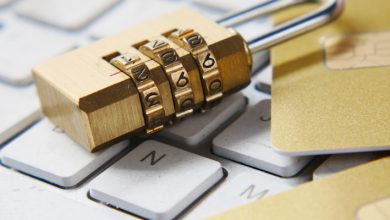Exploring Multi-Signature Wallets for Enhanced Security

- Understanding Multi-Signature Wallets
- How Multi-Signature Wallets Work
- Benefits of Using Multi-Signature Wallets
- Setting Up a Multi-Signature Wallet
- Comparing Multi-Signature Wallets to Traditional Wallets
- Best Practices for Securing Multi-Signature Wallets
Understanding Multi-Signature Wallets
Understanding multi-signature wallets is essential for those looking to enhance their security when it comes to managing cryptocurrencies. These wallets require multiple private keys to authorize a transaction, adding an extra layer of protection against unauthorized access.
With multi-signature wallets, a predetermined number of signatures are required to approve any transaction, which can be set up to include two or more parties. This means that even if one private key is compromised, the funds will still be secure as the attacker would need access to multiple keys to make a transaction.
Multi-signature wallets are particularly beneficial for businesses or individuals who want to reduce the risk of theft or fraud. By distributing the responsibility of holding private keys among different parties, the risk of a single point of failure is minimized.
Overall, multi-signature wallets offer a more secure way to store and manage cryptocurrencies by requiring multiple parties to authorize transactions. This added security can provide peace of mind to users knowing that their funds are better protected against potential threats.
How Multi-Signature Wallets Work
Multi-signature wallets provide an added layer of security by requiring multiple parties to sign off on transactions before they can be executed. This means that even if one key is compromised, the funds will still be safe as the other key holders must also authorize the transaction.
When setting up a multi-signature wallet, users can choose the number of signatures required for a transaction to be approved. This can range from 2-of-3, where any two key holders must sign, to more complex setups like 3-of-5 or even higher. The flexibility in setting the number of signatures allows for customization based on the desired level of security.
In order to make a transaction with a multi-signature wallet, the user will initiate the transaction and then the required number of key holders will need to sign off on it. Once all necessary signatures have been collected, the transaction will be broadcast to the network and executed.
Overall, multi-signature wallets are a powerful tool for enhancing security in cryptocurrency transactions. By requiring multiple parties to authorize transactions, the risk of funds being compromised is significantly reduced. This added layer of security can provide peace of mind for users who want to ensure the safety of their digital assets.
Benefits of Using Multi-Signature Wallets
Using multi-signature wallets can provide several benefits for users looking to enhance the security of their digital assets. One key advantage is the added layer of protection offered by requiring multiple signatures to authorize transactions. This means that even if one private key is compromised, the funds will still be secure as all signatures are needed to complete a transaction.
Another benefit of multi-signature wallets is the ability to distribute control among multiple parties. This can be useful for businesses or organizations that require multiple individuals to sign off on transactions. By spreading control in this way, the risk of a single point of failure is reduced, increasing the overall security of the wallet.
Furthermore, multi-signature wallets can also help prevent insider threats. By requiring multiple signatures, the likelihood of an individual within the organization making unauthorized transactions is minimized. This added layer of security can provide peace of mind for users who want to protect their assets from both external and internal threats.
Overall, utilizing multi-signature wallets can significantly enhance the security of digital assets by requiring multiple signatures for transactions, distributing control among multiple parties, and preventing insider threats. These benefits make multi-signature wallets a valuable tool for users looking to safeguard their cryptocurrencies and other digital assets.
Setting Up a Multi-Signature Wallet
To set up a multi-signature wallet, follow these steps to ensure enhanced security for your digital assets. Firstly, choose a reputable multi-signature wallet provider that aligns with your needs and preferences. Next, create an account with the provider and follow their instructions to set up your wallet. Remember to enable two-factor authentication for an extra layer of security.
After setting up your wallet, you will need to add multiple signers to authorize transactions. This can include yourself and others who you trust to co-sign transactions. Each signer will have their own private key, which is required to approve any outgoing transactions from the wallet.
Once all signers have been added, you can start using your multi-signature wallet to store and transfer your cryptocurrencies. Keep in mind that each transaction will require the approval of the designated signers, which adds an extra level of security to your funds. Additionally, regularly review the activity in your wallet to ensure there are no unauthorized transactions.
In conclusion, setting up a multi-signature wallet is a proactive step towards enhancing the security of your digital assets. By following the steps outlined above and being diligent in managing your wallet, you can better protect your cryptocurrencies from potential threats and unauthorized access.
Comparing Multi-Signature Wallets to Traditional Wallets
When comparing multi-signature wallets to traditional wallets, it is important to consider the differences in security and functionality. Multi-signature wallets require multiple private keys to authorize transactions, whereas traditional wallets only require one. This added layer of security in multi-signature wallets makes them less susceptible to hacking and unauthorized access.
Additionally, multi-signature wallets offer increased protection against insider threats, as multiple parties must sign off on transactions. This can be particularly beneficial for businesses or organizations that require multiple approvals for financial transactions. On the other hand, traditional wallets may be more convenient for individual users who do not require this level of security.
In terms of functionality, multi-signature wallets can provide greater control and accountability over funds. With multiple parties involved in the signing process, there is a higher level of transparency and oversight. This can help prevent fraud and ensure that funds are only used for their intended purposes.
Overall, while traditional wallets may be sufficient for individual users, multi-signature wallets offer enhanced security and control for businesses and organizations. By requiring multiple signatures to authorize transactions, multi-signature wallets can help protect against unauthorized access and ensure the integrity of financial transactions.
Best Practices for Securing Multi-Signature Wallets
When it comes to securing multi-signature wallets, there are several best practices that users should follow to enhance the security of their digital assets. By implementing these measures, individuals can reduce the risk of unauthorized access and potential theft of funds.
- Choose a reputable multi-signature wallet provider: Selecting a trusted and established provider is crucial in ensuring the security of your digital assets. Look for platforms with a proven track record of implementing robust security measures.
- Use strong and unique passwords: When setting up your multi-signature wallet, make sure to create strong and unique passwords that are not easily guessable. Avoid using common phrases or personal information that can be easily compromised.
- Enable two-factor authentication: Adding an extra layer of security through two-factor authentication can help prevent unauthorized access to your multi-signature wallet. This feature typically requires users to verify their identity through a secondary device or method.
- Regularly update your software: Keeping your multi-signature wallet software up to date is essential for protecting against potential security vulnerabilities. Be sure to install updates and patches as soon as they become available.
- Backup your wallet: To safeguard against data loss or hardware failure, it is important to regularly backup your multi-signature wallet. Store backups in secure locations, such as encrypted USB drives or cloud storage services.
By following these best practices, users can significantly improve the security of their multi-signature wallets and reduce the risk of unauthorized access to their digital assets. Remember that security is an ongoing process, and it is important to stay vigilant and proactive in protecting your funds.



